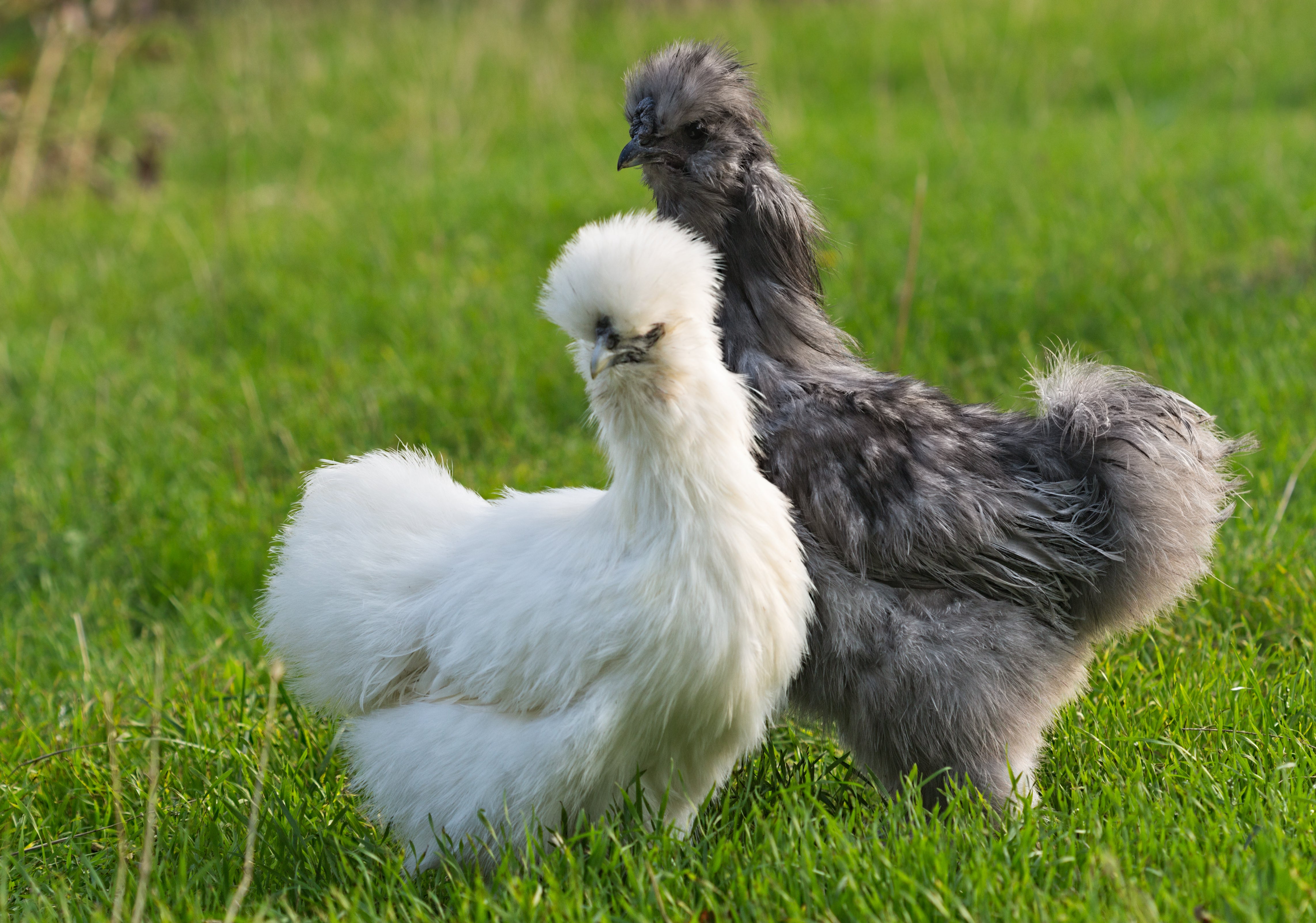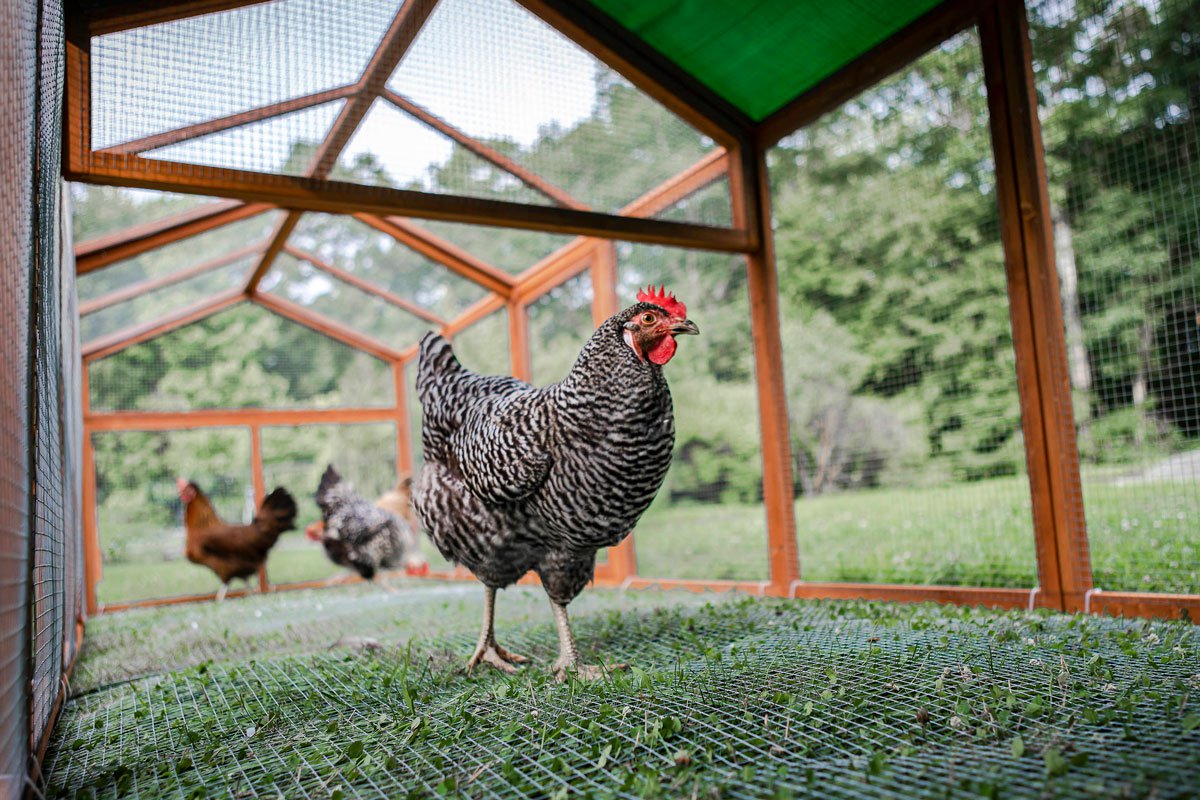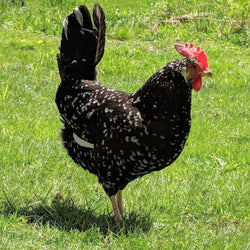www.mypetchicken.com/blogs/faqs/tagged/glossary/--
Frequently Asked Questions
Here we answer the most commonly-asked questions about ordering, chicken care, and more.
What is a feeder for my pet chickens?
A feeder is the item you use to dispense feed for your flock. Of course, you could always just dispense feed on the ground or in a dish, but there would be a lot of feed wasted that way. Chickens tend to scratch and scatter the feed around, so chicken feeders are designed to minimize that. There are many different types of chicken feeders to choose from. For example, there are the common and inexpensive basic plastic feeders. They're tried and true, but they aren't fancy! Then there are the feeders with special features. For example, some feeders can be...
Read MoreWhat is a fertilized chicken egg?
Fertile eggs are those that contain both ova and sperm, and will develop into a baby chick if incubated. If you have nothing but hens in your flock, you will not have fertilized eggs---you would need a male rooster for that. Fertilized eggs are fine to eat; there is just a slight difference between a fertile and infertile egg. There is no difference in taste, and you can only tell the difference between infertile and fertile (unincubated) contents if you're very sharp-eyed. Illustration by Ray Yang for My Pet Chicken
Read MoreWhat are shanks and spurs?
|A chicken's shank is the bottom part of her leg, above the foot, but below the hock. The spur is the chicken's chief weapon, and grows out of the shank. It's something every chicken has... but generally only the spurs of males grow very large. Older hens may grow larger spurs as their hormones change, and there are some breeds where it's fairly common for younger hens to have spurs, too. But for the most part, hens will simply have small spur numbs.
Read MoreWhat does the word "broody" mean?
When a hen is broody, that means she wants to hatch her eggs and raise chicks. A breed known for frequent broodiness has hens that often, individually go broody. These hens may not even need eggs to set on to be broody--they may brood in a nest with no eggs. Or in a corner on rocks. Further, if there ARE eggs in the nest, if there is not a rooster in your flock, your hens will not know that their eggs won't be fertile. Your hen will seem to be in a sort of bad temper while she broods, she...
Read MoreWhat is molting?
Molting occurs once a year in adult birds older than one year, normally in late summer or autumn. During this time, birds will lose their feathers and regrow new ones. It's a way of refreshing their plumage for the winter so they'll stay warm. There are three types of molts: A hard molt. A hard molt means all the feathers are lost almost at once, so molting is over relatively quickly. A soft molt. A soft molt means the feathers are lost and regrown gradually. Sometimes you may hardly notice a soft molt, except as a reduction in laying. A...
Read MoreWhat is debeaking or "beak trimming"? Do you debeak your birds?
Debeaking or "beak trimming" is what it's called when a baby chick's beak is burnt or seared off. It is painful and cruel. Here we explain more about the practice and why we're against it. Why do some breeders debeak their birds? Most rare breed hatcheries and breeders do not beak trim newly-hatched baby chicks, but often trim beaks of birds they're planning on selling when they're a bit older. The reason they do this is so they can pack the birds into a very small space. Keeping chickens in close confinement naturally causes severe stress, and in response to...
Read MoreWhat is an apron fence, and why is it helpful?
An apron fence is a fence that helps to keep out digging predators. But it isn't normally a special type of fence that you buy; it's more of a special way to install your fence. You can install a dug apron fence or a bent apron fence. For a dug apron fence, you might bury a foot or so of your fence in the ground... so if you buy a six foot fence, one foot of it would be buried, and the fence would be five feet high. When a predator like a rodent, dog, or fox tries to dig...
Read MoreWhy is it necessary that my chickens have grit?
Scarce as hens' teeth." Have you ever heard that expression before? Of course, chickens don't have teeth... and that's a problem, since their diet consists of grains, seeds, grasses, insects and other things that need to be chewed. Nature solved this problem by giving chickens a gizzard where their food is ground up. But they sort of digest it backwards, at least from our perpective. We chew food and then it goes to the stomach. They get it to their stomachs and then chew it. Weird, right? Here's how it works: When chickens swallow food, it first goes into their...
Read More







"The Clubhouse" Coop
Easy to assemble and built to last, the Clubhouse Coop is the perfect starter coop for a small flock.











